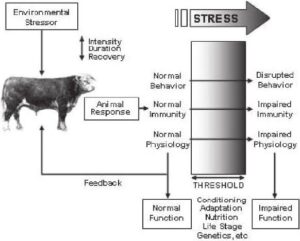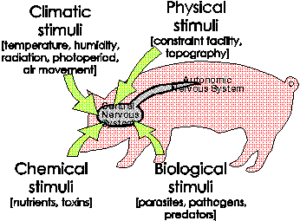Back to: ZOOLOGY 400 Level
Welcome to class!
Hello there, my smart friend! It’s great to see your curious mind ready to learn again. Today’s topic is really interesting and super important, especially when thinking about how animals (including us humans) survive in tough conditions. We’re learning about Physiological Regulation under Environmental Challenges. Imagine living in a desert, a cold mountain, or even deep under water—how do animals adjust their bodies to handle all these harsh places? Let’s find out together.
Physiological Regulation Under Environmental Challenges
What is Physiological Regulation?
Physiological regulation is how an animal’s body keeps internal conditions stable, even when the environment changes. It includes things like keeping body temperature steady, balancing water and salt, and controlling breathing or heartbeat. Without it, life would be very difficult or even impossible.

Environmental Challenges Animals Face
Temperature Extremes
Some animals live in extremely hot or cold places.
In heat, animals regulate their body temperature by sweating, panting, or being active only at night.
Example: Camels in northern Nigeria conserve water and have special noses that trap moisture from their breath.
In cold, animals grow thick fur or produce more body heat.
Example: Arctic foxes have thick fur and short ears to conserve body heat.
Water Scarcity
Water is life—but what if there’s very little of it?
Animals in deserts produce concentrated urine and dry faeces to avoid losing water.
Example: The kangaroo rat can survive without drinking water at all. It gets moisture from its food and has super-efficient kidneys.
Oxygen Availability
Some environments have low oxygen, like high mountains or underwater.
Animals that live in these places have special adaptations like large lungs or more red blood cells.
Example: The African bar-headed goose has haemoglobin that binds oxygen very efficiently for flying over the Himalayas.
Salt Balance (Osmoregulation)
When animals live in salty water or dry areas, they need to control how much salt and water they keep.
Marine animals often excrete salt through special glands.
Example: Sea turtles remove excess salt through glands near their eyes.

Freshwater animals constantly absorb water and lose salts, so they work hard to reabsorb salt through their gills or skin.
Food Shortage
During seasons when food is hard to find, animals may store fat or reduce activity.
Some animals enter a state of torpor or hibernation, lowering their metabolism.
Example: Certain bats in Nigeria hibernate when insects (their food) are scarce.
Why It Matters
Without physiological regulation, animals wouldn’t survive the ever-changing environments around them. It allows them to stay balanced, healthy, and ready to respond to challenges. This knowledge also helps us in veterinary science, wildlife conservation, and even in understanding our own health.

Summary
- Physiological regulation helps animals maintain stable internal conditions despite external changes.
- Animals deal with temperature extremes using fur, body shape, and behaviour.
- In dry places, animals reduce water loss using efficient kidneys and dry waste.
- Animals in low-oxygen areas adapt with better lungs or oxygen-carrying blood.
- Salt and water balance (osmoregulation) is vital for aquatic and desert animals.
- Animals cope with food shortages by slowing down metabolism or storing energy.
Evaluation
- What is physiological regulation, and why is it important?
- How do camels survive in hot, dry environments?
- Give two examples of how animals regulate temperature in extreme cold.
- What is osmoregulation, and how do sea turtles manage salt balance?
- Why do some animals hibernate or enter torpor?
You’re truly amazing, and I hope you feel proud of yourself today! Learning how animals adapt in difficult environments helps us understand life better. Keep showing up, stay curious, and know that at Afrilearn, we’re cheering you on every step of the way. Let’s keep building that brilliant future together—lesson by lesson!
